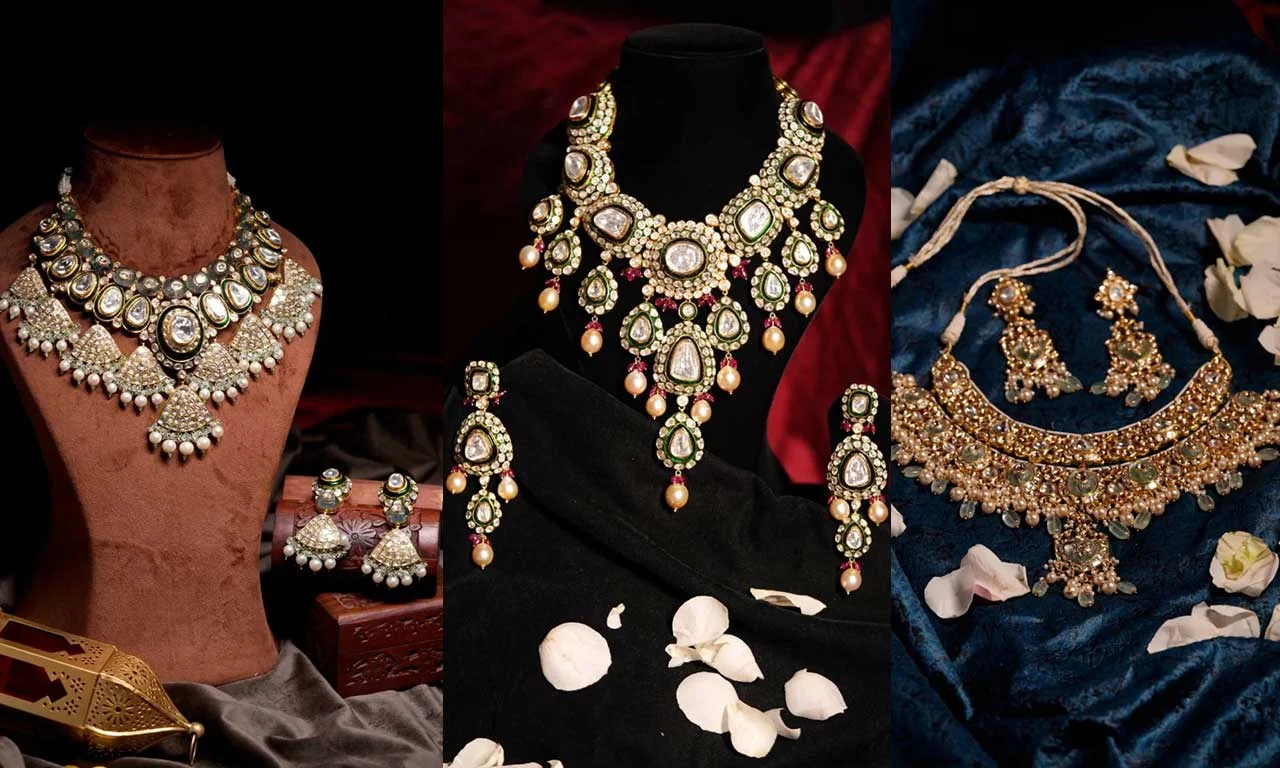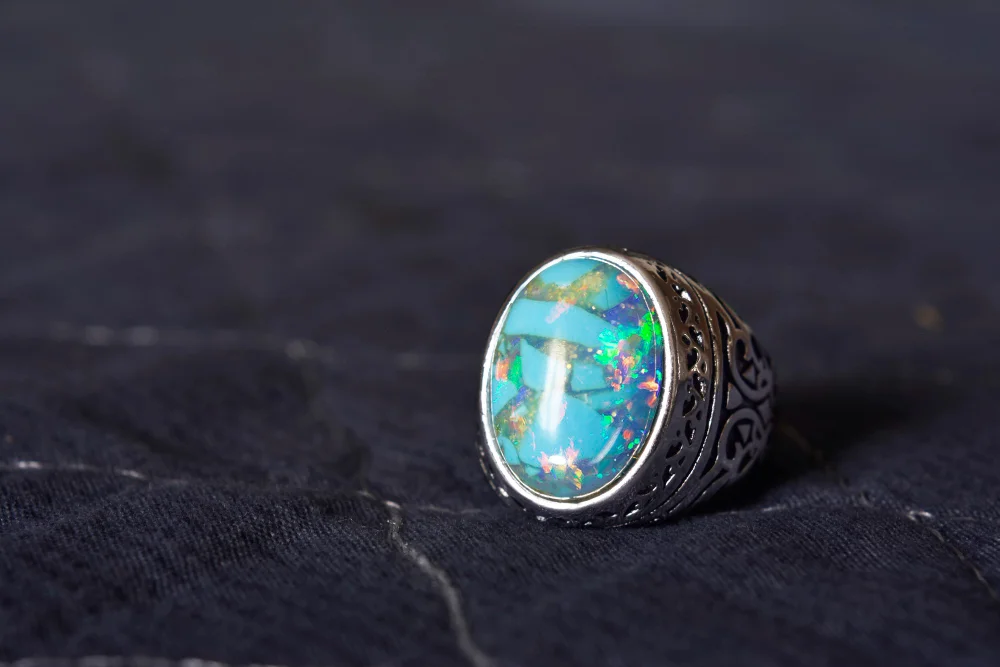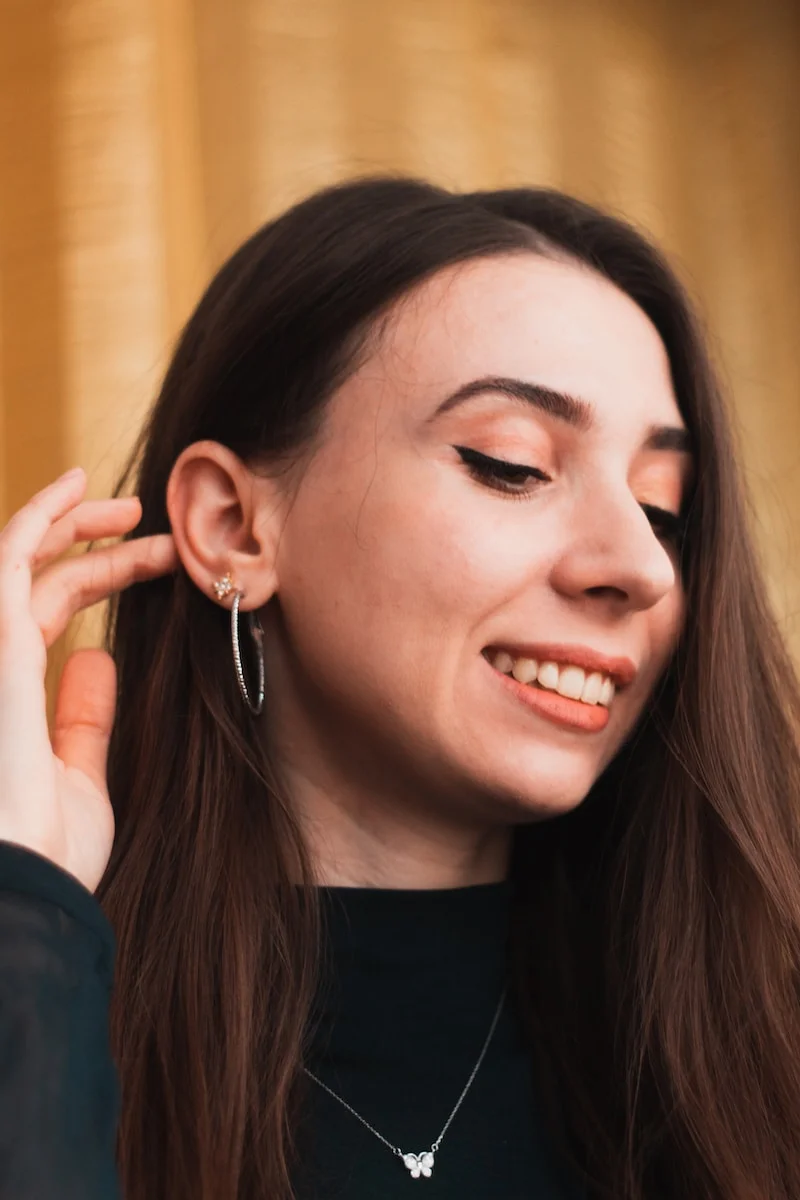Polki and Kundan Jewellery
Polki and Kundan jewellery are two captivating Indian jewellery styles known for their intricate craftsmanship and dazzling beauty. In this blog, we will delve into the fascinating world of Polki and Kundan jewellery, exploring their origins, characteristics, and the key differences that set them apart.
The rich history and cultural significance of these jewellery styles
Both Polki and Kundan jewellery have deep-rooted historical and cultural significance in India. They have been cherished and adored by generations, representing not only exquisite craftsmanship but also tradition, opulence, and elegance.
The aim of this blog is to help you understand the nuances of Polki and Kundan jewellery, making it easier for you to choose the perfect piece for your special occasions or everyday wear.
What is Polki Jewellery
Definition and origins
Polki jewellery in Jaipur, features uncut diamonds, often set in intricate designs with gold foils. This style originated in the Mughal era and has been an emblem of royalty and splendour ever since.
Manufacturing
The creation of Polki jewellery involves setting uncut, natural diamonds in 22-karat gold. This traditional technique requires exceptional skill and craftsmanship.
Characteristics
Polki jewellery is known for its unmatched brilliance and sparkle. The use of uncut diamonds allows for a unique play of light, making Polki pieces highly desirable and sought after.
What is Kundan Jewellery
Definition and origins
Kundan jewellery, on the other hand, incorporates glass or gemstones set in a framework of gold. This art form has its roots in Rajasthan and Gujarat and has been an integral part of Indian culture for centuries.
Manufacturing
Crafting Kundan jewellery involves setting gemstones or glass pieces using a technique called Meenakari, which includes the application of colourful enamel on the reverse side. This creates a stunning, vibrant effect.
Characteristics
Kundan jewellery is renowned for its vivid and colourful appearance. The combination of gemstones and enamel work results in dazzling, eye-catching ornaments.
Key Differences Between Polki and Kundan Jewellery
A. Materials
1. Polki – uncut diamonds
2. Kundan – glass or gemstones
B. Craftsmanship
1. Polki – intricate settings and designs
2. Kundan – Meenakari work and enamel
C. Occasions and suitability
1. Polki – weddings and formal events
2. Kundan – festivals and traditional celebrations
How to Choose Between Polki and Kundan Jewellery
According to Best Jewellers in Jaipur you can follow these steps to choose the right type of jewellery according to your preferences.
A. Factors to consider when making a choice
When choosing between Polki and Kundan jewellery, consider your personal style, the occasion you’re dressing for, and the outfit you plan to pair it with.
B. Personal style and preferences
If you prefer understated elegance, Polki might be your choice. If you’re drawn to vibrant, colourful pieces, Kundan may be more appealing.
C. Occasion and outfit compatibility
Match the jewellery style to the occasion. Polki’s sophistication suits formal events, while Kundan’s vibrancy is perfect for festivals and traditional celebrations.
Conclusion
Polki and Kundan jewellery each have their own unique charm, stemming from their materials, craftsmanship, and suitability for different occasions. Both Polki and Kundan jewellery represent the rich cultural heritage of India and the unparalleled skill of its artisans.
Encouragement to explore and celebrate the world of exquisite jewellery.
Whether you choose Polki or Kundan, delve into the world of exquisite Indian jewellery, and let these timeless pieces become a part of your personal style and heritage.


















